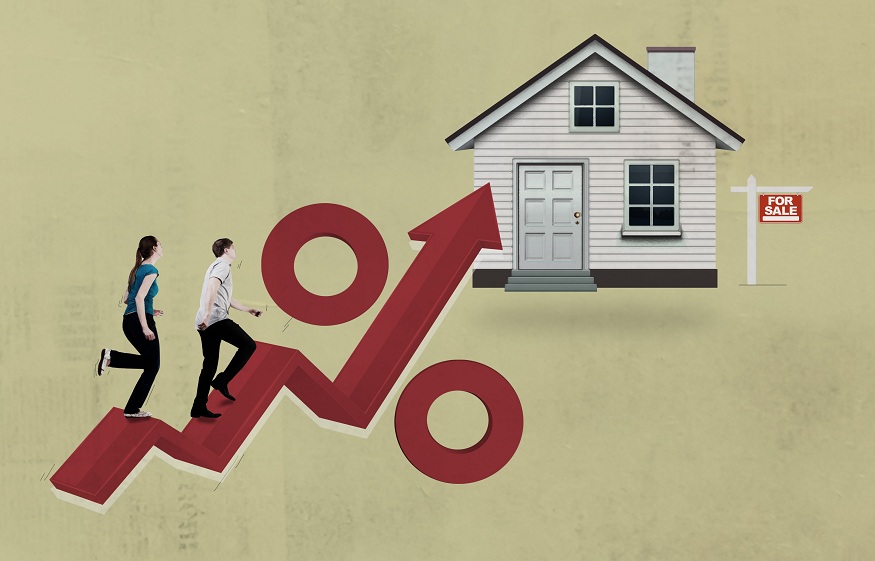Mortgage Rates Are Going Up—But Why?
4 min read
You may have read recently that U.S. interest rates have risen and wondered what that means for the national economy—or even why they were increased to begin with. With terms like “inflation” and “recession” being tossed around, it’s a good time to learn exactly what economists mean when they use those words, the impact that interest rates have on the national economy and mortgage rates, and why they’re going up now.
How the Pandemic Set the Stage
Believe it or not, it was just under three years ago that the modern world experienced the shock of its first global pandemic, shutting down just about every aspect of contemporary life. From travel to grocery shopping to work and school, there weren’t many facets of daily existence that weren’t impacted by COVID-19 and government responses to it.
And out of all those impacts, one in particular worried economists: the grinding slow-down of global markets. With so many people stuck at home and so many businesses put on a lengthy pause, the purchasing rate likewise dropped off a cliff. Put simply, people weren’t buying as much as they used to.
Every government had to respond to the threat to their economy in their own way, following their own laws and institutional hierarchies. In the U.S., the primary role in trying to get things started again fell to the Fed—or the Federal Reserve System.
The Role of the Fed
On its website, the Federal Reserve System says it’s the “central bank of the United States,” and while that’s true, it doesn’t give most consumers a full picture of its mission or functions. Put succinctly, the Fed’s job is to help drive the U.S. economy and make sure it’s operating optimally. As part of that mission, the Fed monitors long-term interest rates and adjusts them when circumstances warrant in order to bring about a particular effect.
During the early days of the pandemic, when almost everything (including spending) came to a sudden stop, the government needed a way to encourage people and businesses to begin buying things and moving money around once more. To do that, the Fed cut interest rates. And it worked, as people and businesses began spending pandemic relief funds.
Rising Inflation Means Rising Interest Rates
So what’s going on now, then, is the opposite problem. As spending picked up to a brisk pace, prices began to rise and the economy entered into an inflationary period. Across all sectors, annual inflation rates for the U.S. increased from 1.4 percent in 2020 to 7 percent in 2021 and for 2022 thus far, we’re at 8.3 percent.
It probably comes as little surprise, then, that the Fed’s response is to do the opposite of the rate-cutting that encouraged spending. In fact, increasing interest rates is the traditional Fed strategy to cool down inflationary tendencies in hopes of avoiding a recession. That’s because when inflation spikes too high for too long, businesses may trim production and increase prices even higher, resulting in a decline in economic activity.
Recession, Defined
There are a few unofficial definitions you might have run into before, but for the U.S., the group to turn to is a private nonprofit think tank known as the National Bureau of Economic Research (NBER).
And according to NBER, a recession is “a significant decline in economic activity that is spread across the economy and that lasts more than a few months.” That decline must impact the economy as a whole, not simply one or two sectors.
Mortgage Rates and Interest Rates
When the Fed increases interest rates hoping to cool off inflation and stave off a recession, mortgage rates are determined more broadly by the market. That includes everything from the Fed’s actions to buyer behavior to stocks to inflation. As with so many aspects of managing the national economy, it’s all a bit of a balancing act.
Inflation in particular drives mortgage rates. When there’s more interest in buying homes and more heated spending activity, mortgage rates tend to increase. Some experts believe it’s possible we’ll see mortgage rates over 7% in 2022.
Is It Still a Good Time to Buy?
Despite all this, it’s still a pretty good time to buy, if you’re in the market for a new home. While 7% is certainly higher than the 2%-4% range of the last few years, it’s still pretty buyer-friendly when considered in the historical context. After all, up until the mid-eighties, 30-year mortgage rates were over 10%.





